Not dissimilar to human civilizations, many species within the greater animal kingdom heavily depend on parental care. Many of these species are altricial, meaning they are born helpless or “immature.” Most animals in this category are born underdeveloped: hairless, unable to walk or run independently, or even deaf and blind. These highly dependent animals progress and develop much differently than precocial species, born relatively “mature” and mobile. Many precocial species, like birds, leave the nest immediately and are classified as nidifugous.
Altricial animals typically have a shorter gestation period, which explains why their newborns are underdeveloped. However, these creatures experience rapid development, given their parents’ constant support. On the other hand, precocial animals grow slower because they are much more self-reliant. Independence can be restrictive in some ways. Many of these differences are essential adaptations for whichever environment they inhabit. With that said, let’s explore eight animals that are blind at birth but gain their sight later in life.
#1: Kangaroos
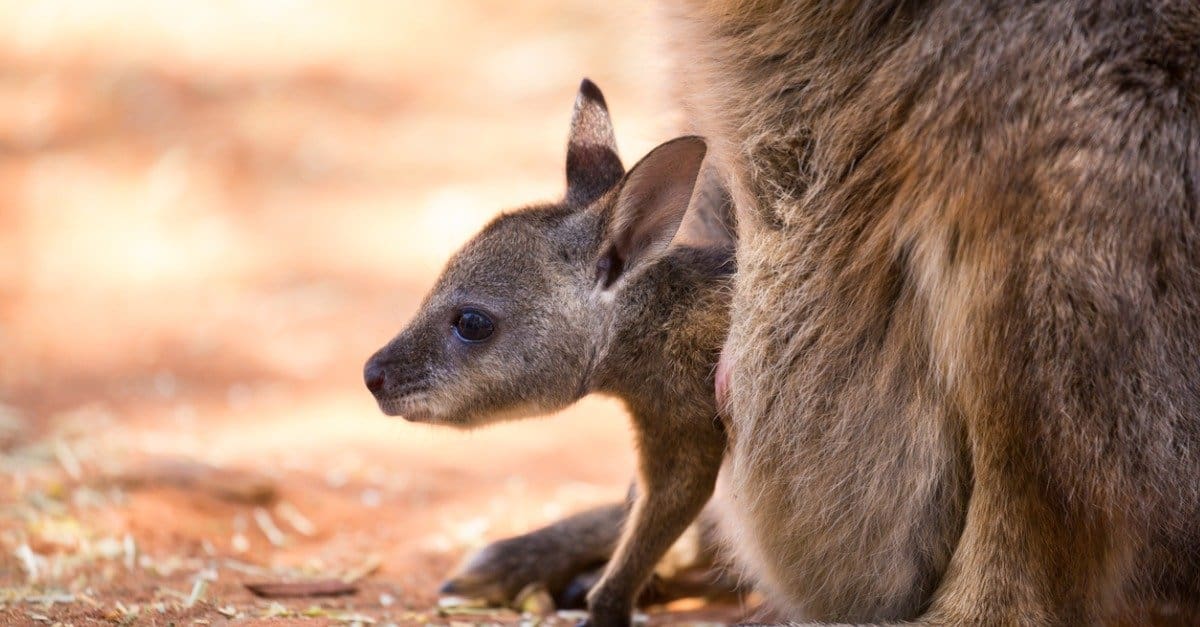
Kangaroo
babies (joeys) crawl into their mother’s pouch immediately after birth.
©iStock.com/burroblando
A Kangaroo baby (joey) is almost unrecognizable at birth. They are incredibly tiny, measuring around just an inch. Not only are they small, but they are also completely blind, deaf, and hairless at birth. A newborn joey is helpless, entirely dependent on its mother. In fact, it will immediately climb into its mother’s marsupium (pouch) upon birth.
A kangaroo pouch provides all a joey needs to survive and thrive in its new environment. This is especially helpful when considering that the gestation period for kangaroos is only one month long. Joeys will remain in their mother’s pouch for about 5-6 months as they develop. This pouch is a cozy pocket of skin equipt to expand as the joey grows in size. It contains four nipples, two on each side, essential for nursing the young marsupial in its fragile state.
#2: Domestic Dogs
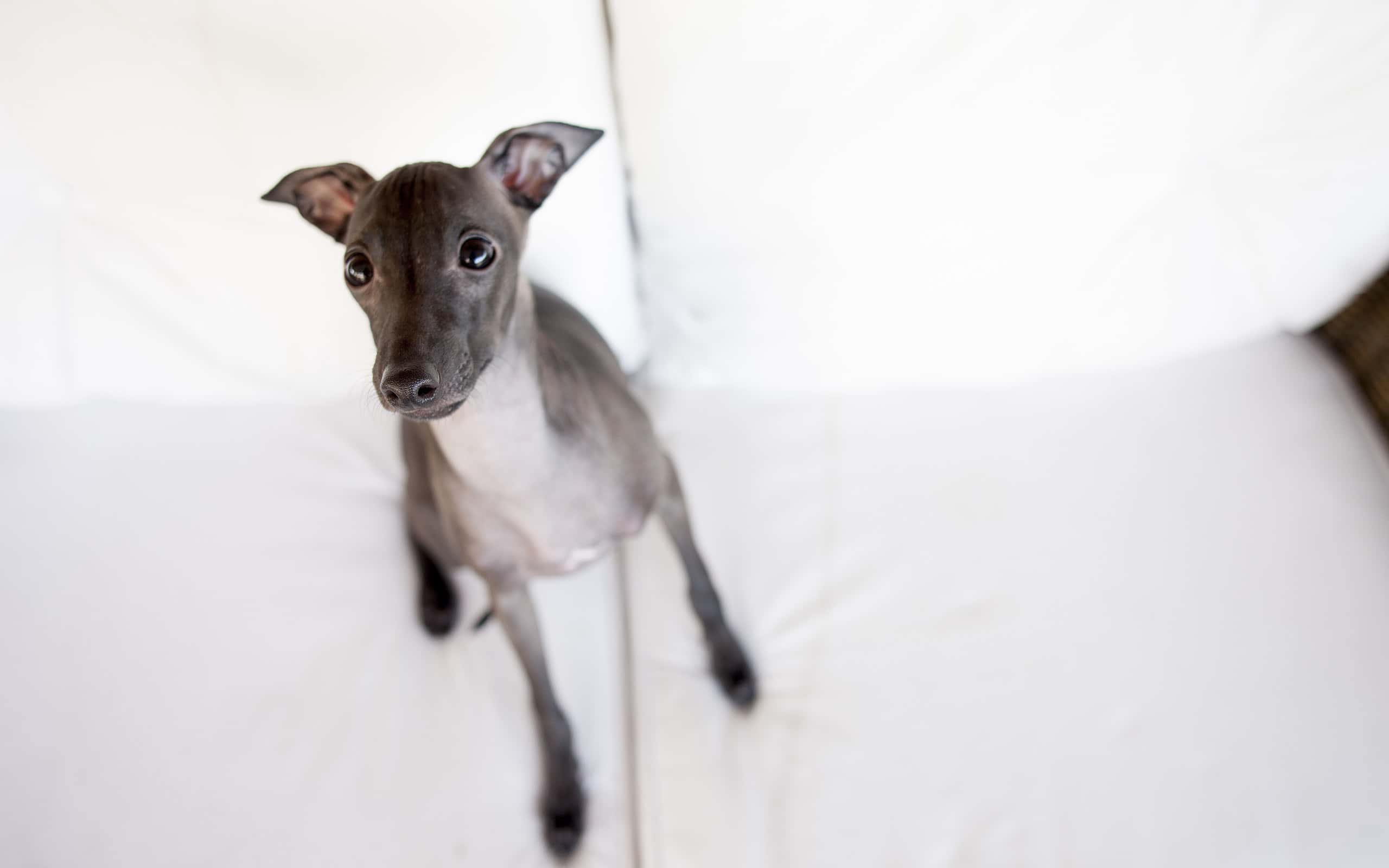
Domestic dogs are born with their eyelids shut entirely.
©claudiio Doenitz/ via Getty Images
Man’s best friend, the domestic dog (Canis familiaris), is undoubtedly mama’s best friend at the early stages of its life. Newborn puppies depend on their mothers for everything. They are born deaf (ears closed), and their eyelids are completely shut. While this may be puzzling, there are a few reasons for this. As Psychology Today points out, canines survived historically by hunting in the wild. That means that a long gestation period, which would involve carrying around a litter of puppies for months on end, would ultimately hinder the pregnant mother from doing what she does best. Hunting would be much more difficult in that condition, so having a shorter gestation time is in her best interest. As a result, that period lasts about two months, meaning that the mother’s litter has less time to develop. Thus, her adorable new pups’ vital organs are underdeveloped, leaving them unable to function without her paternal care.
#3: Squirrels
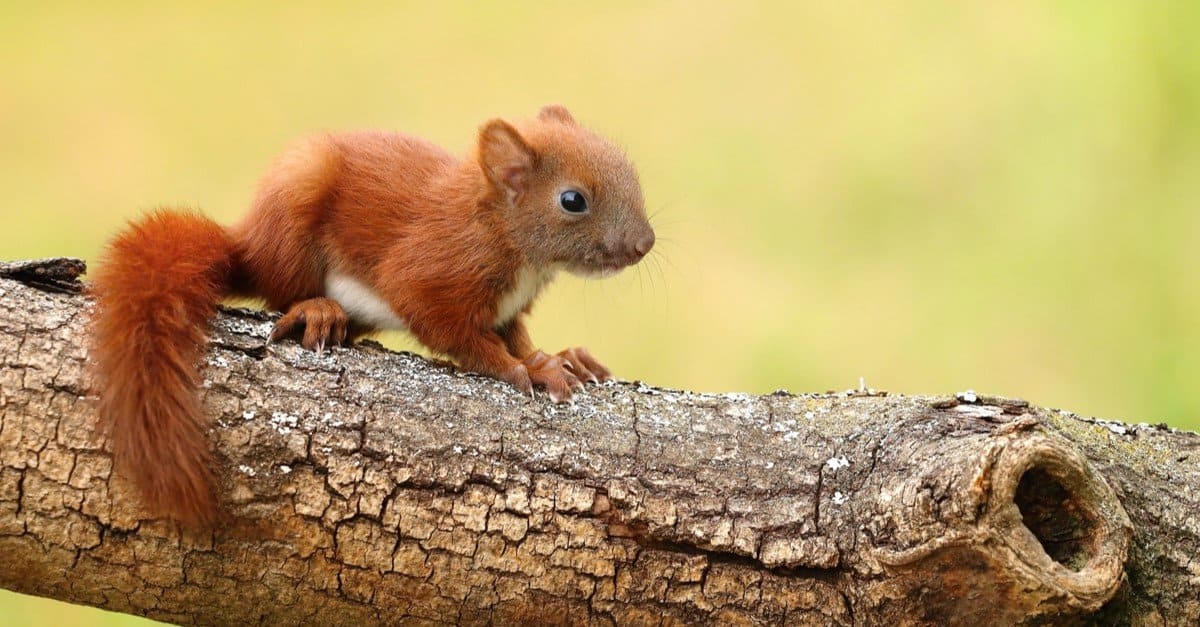
Baby squirrels cannot open their eyes until they are four weeks old.
©Miroslav Hlavko/Shutterstock.com
Squirrels are also practically unrecognizable at birth. Many of their essential organs, including sensory organs like hearing and eyesight, are not functional. Upon birth, squirrels weigh around 8.5 grams, far less than a pound. They are born naked, deaf, and blind, entirely dependent on parental care to survive. In fact, baby squirrels’ eyes don’t open until they are around four weeks old. After that, they will begin to explore their surroundings. They become fully weaned and independent around 12 weeks old.
#4: Opposums
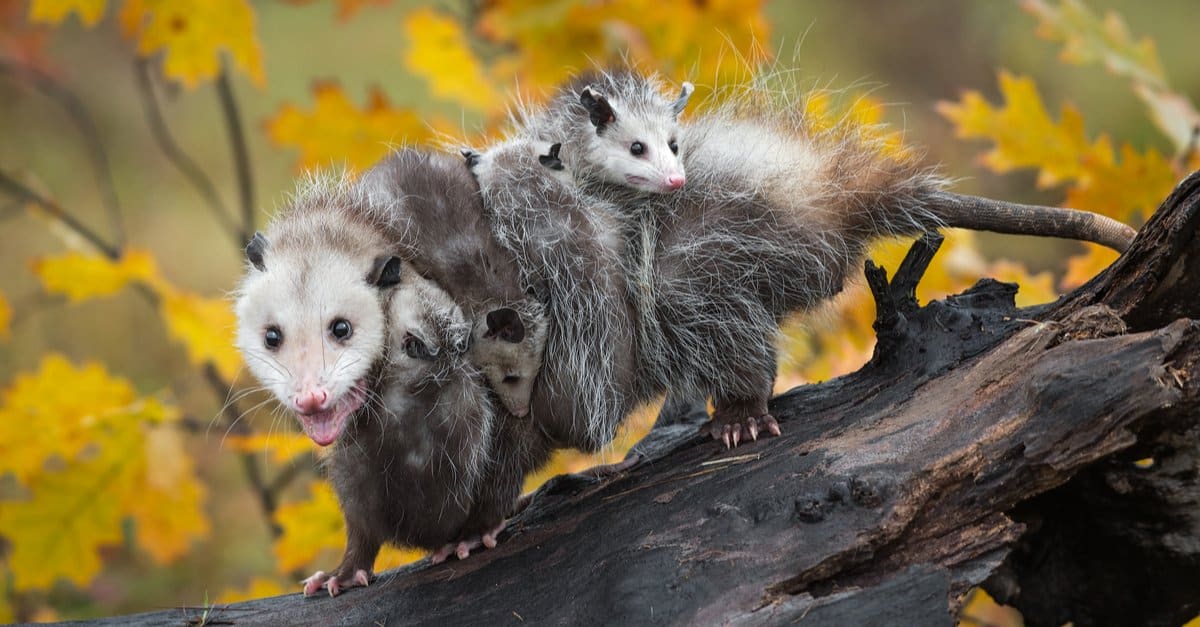
Similar to kangaroos, the opossum’s gestation lasts for about 15 days.
©Holly Kuchera/Shutterstock.com
Opossums are proud members of the marsupial family, which includes kangaroos, koalas, wombats, bandicoots, and more. These fascinating creatures also begin life in an immature state. The gestation period lasts around 15 days, similar to its kangaroo relative. Opposums will enter their mother’s marsupium soon after birth, remaining there for approximately two months. Much like the other species on this list, opossums are stricken with temporary blindness when they are born. Don’t let these humble beginnings fool you! These creatures grow to hunt mice, birds, and even snakes — some of which they are immune to.
#5: Lions
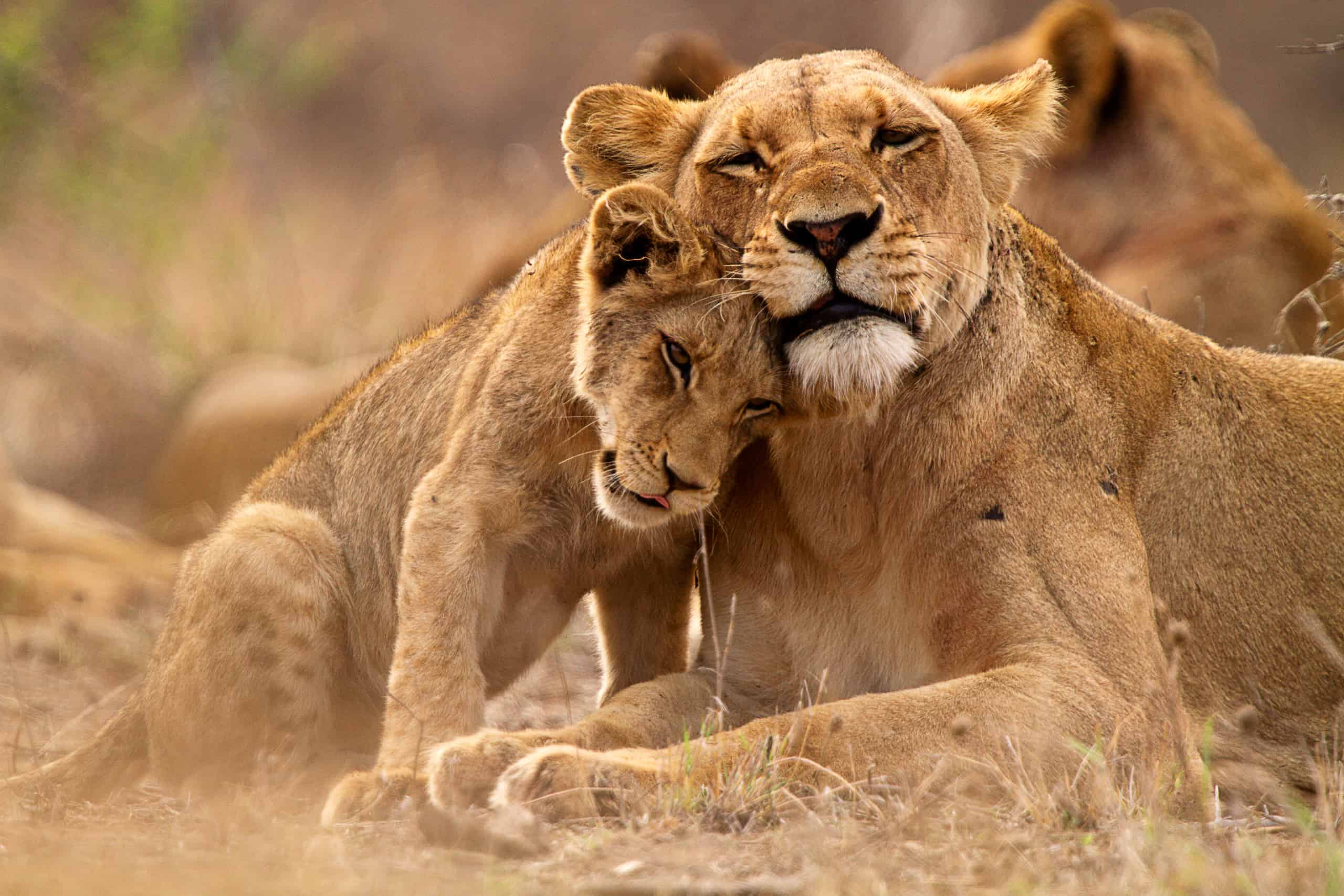
Lion
cubs are born with dark spots that help them blend in with their environment, protecting them from predators.
©Thomas Retterath/Shutterstock.com
Even animals at the top of the food chain must overcome difficult circumstances. This is the case for lion cubs (Panthera leo), whose mother hides them for the first few weeks of their lives. With a gestation period of around four months, lionesses give birth to blind, vulnerable cubs. To help them adjust to such a challenging environment, cubs have dark spots on their skin that allow them to camouflage and remain hidden from predators. The early stages of a lion are dangerous, as less than 50% make it through their first full year of life. As a result, their mothers are fiercely protective of them. In fact, she will change dens rather frequently to ensure their safety.
#6: Wolves
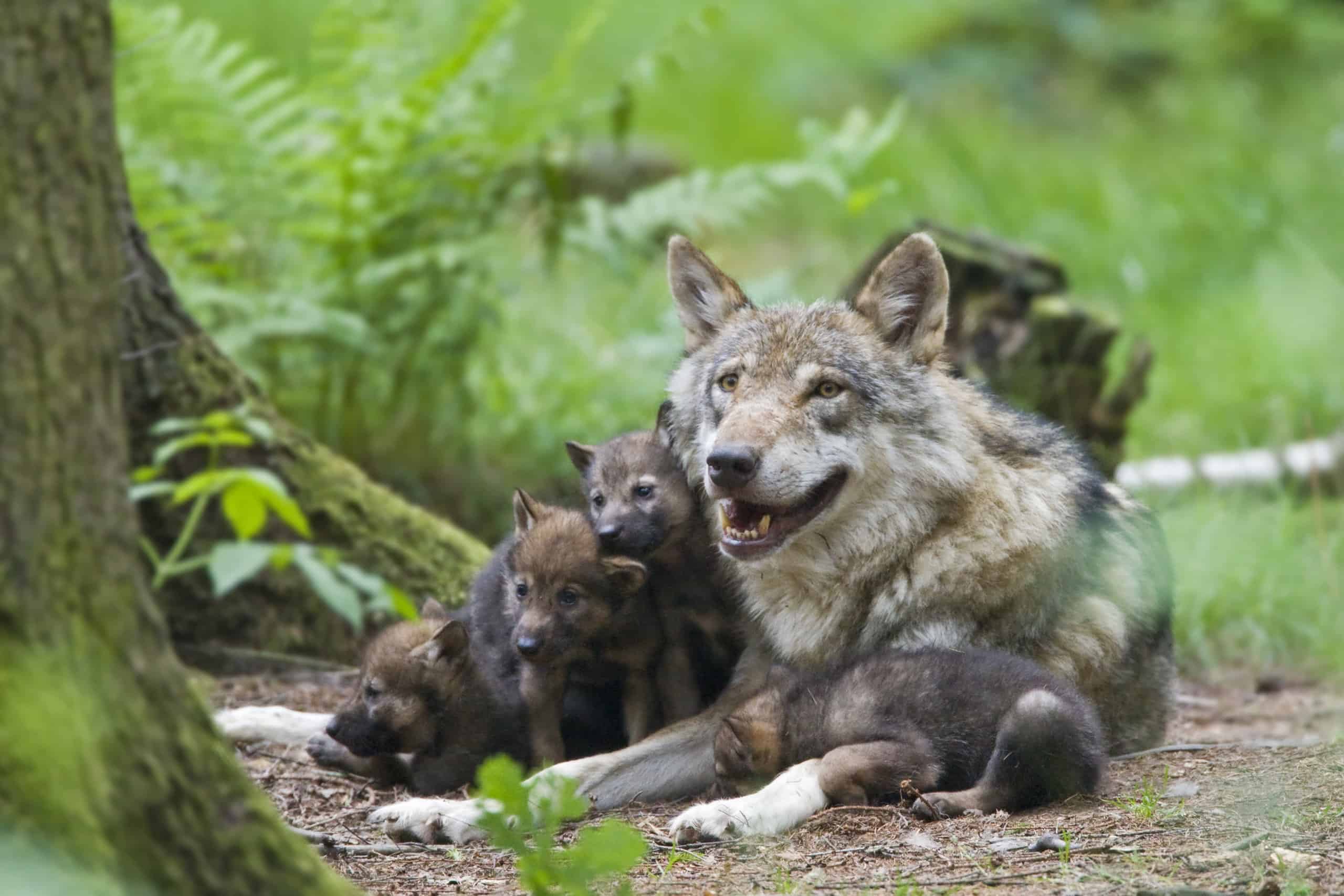
A wolf’s gestation period lasts for about three months.
©Bildagentur Zoonar GmbH/Shutterstock.com
Life isn’t easy to start for the world’s top apex predator. Wolves (Canis lupus) are majestic creatures that are the subject of folklore for humans but the worst nightmare for all their victims. However, as pups, these uncanny canines are deaf and blind. As previously mentioned, the canine’s need to hunt (up to 5-7 pounds of meat per day) requires her to have a short-lived gestation period. This period lasts for around three months. Most predator species of this caliber follow a similar template. At birth, pups usually weigh about 1-2 pounds.
#7: Giant Pandas
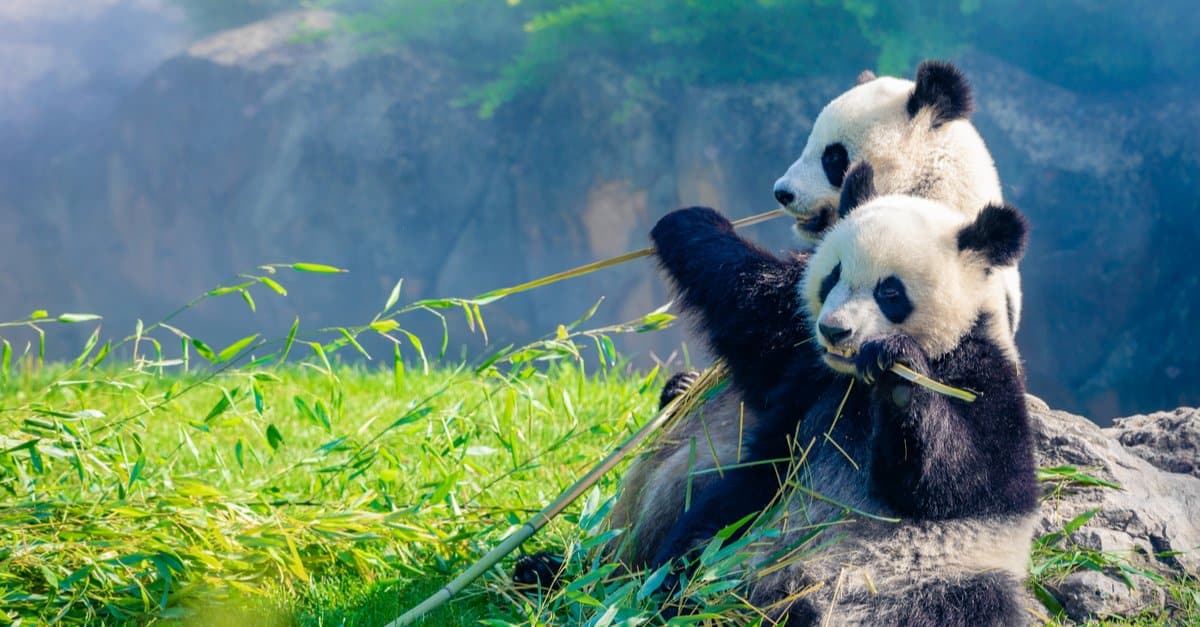
The giant panda is around 100 grams at birth but can grow up to 551 pounds as it matures.
©Daniel X D/Shutterstock.com
Giant pandas (Ailuropoda melanoleuca) are among nature’s most beloved animals for their cute appearance and shy personalities. These lovable creatures can grow up to be an enormous 551 pounds. That’s pretty impressive, given that 99% of their diet is bamboo! However, panda cubs weigh about 100 grams at birth and suffer temporary blindness. They are helpless, unable to crawl, and spend much of their early days sleeping and suckling their mother. The cub is entirely independent of its mother within the first one and a half to two years of its life.
#8: Rabbits
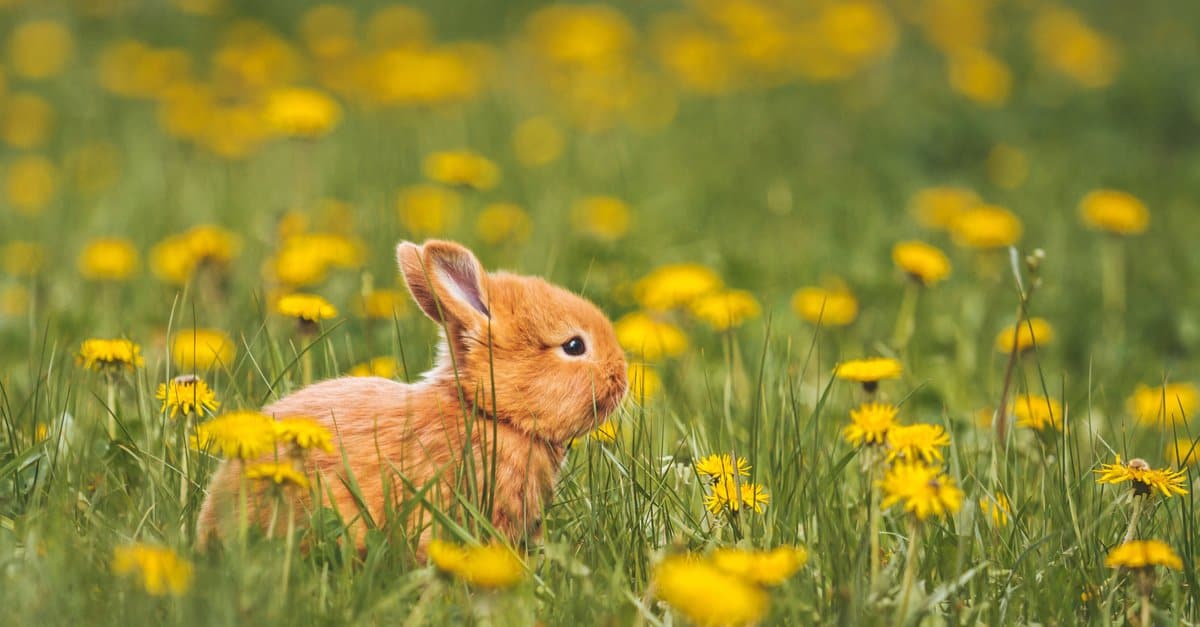
Rabbits are born helpless, blind, and naked but are self-reliant after their first month.
©iStock.com/Drakuliren
Another adorable creature is the rabbit (Oryctolagus cuniculus). In the wild, rabbits face many challenges that make their chances of survival grim from the beginning. While they are ingenious animals that build underground tunnels that provide safety and shelter, rabbits are often preyed on by a variety of predators in their environment. When it comes to breeding, female rabbits are incredibly fertile and capable of breeding most of the time. They have a gestation period of about 30 days, and they will give birth to a litter of kittens (or kits). These kits are born naked and blind, solely reliant on their mother for support and nursing. However, her babies develop quickly and will be on their own after the first month.
The photo featured at the top of this post is © Sakura Image Inc/Shutterstock.com
Thank you for reading! Have some feedback for us? Contact the AZ Animals editorial team.






